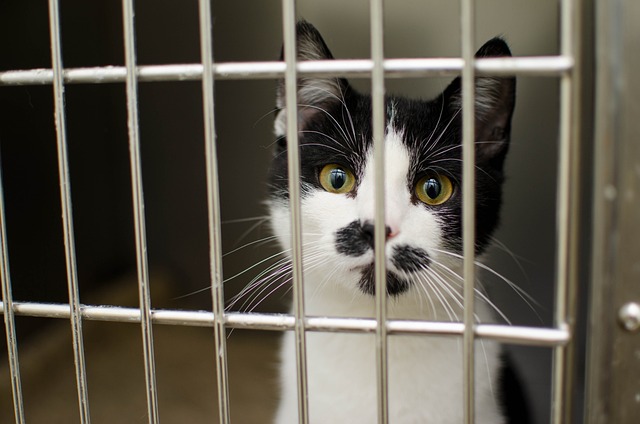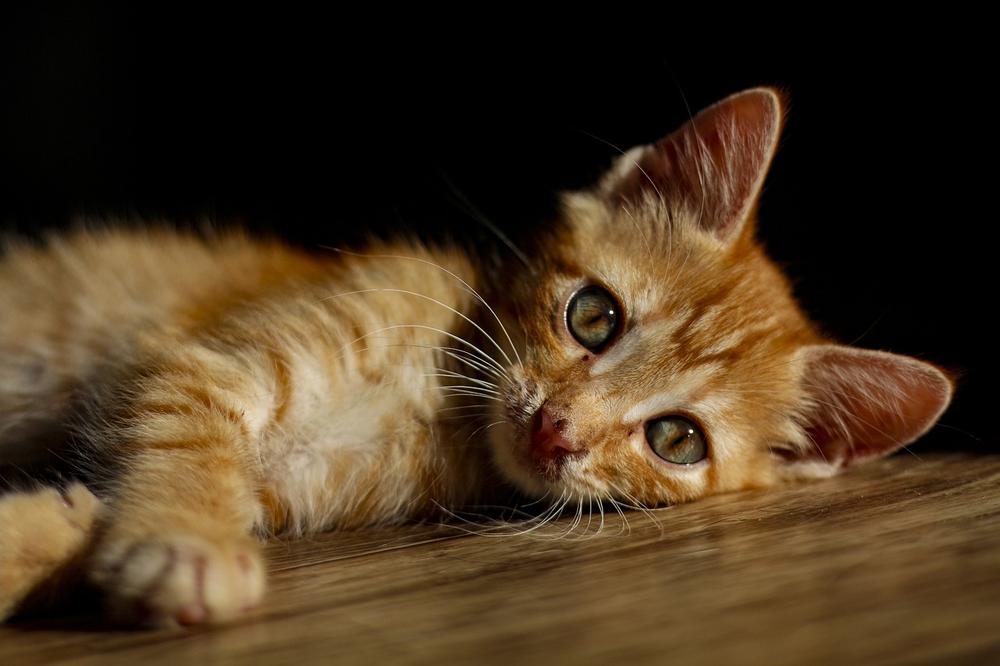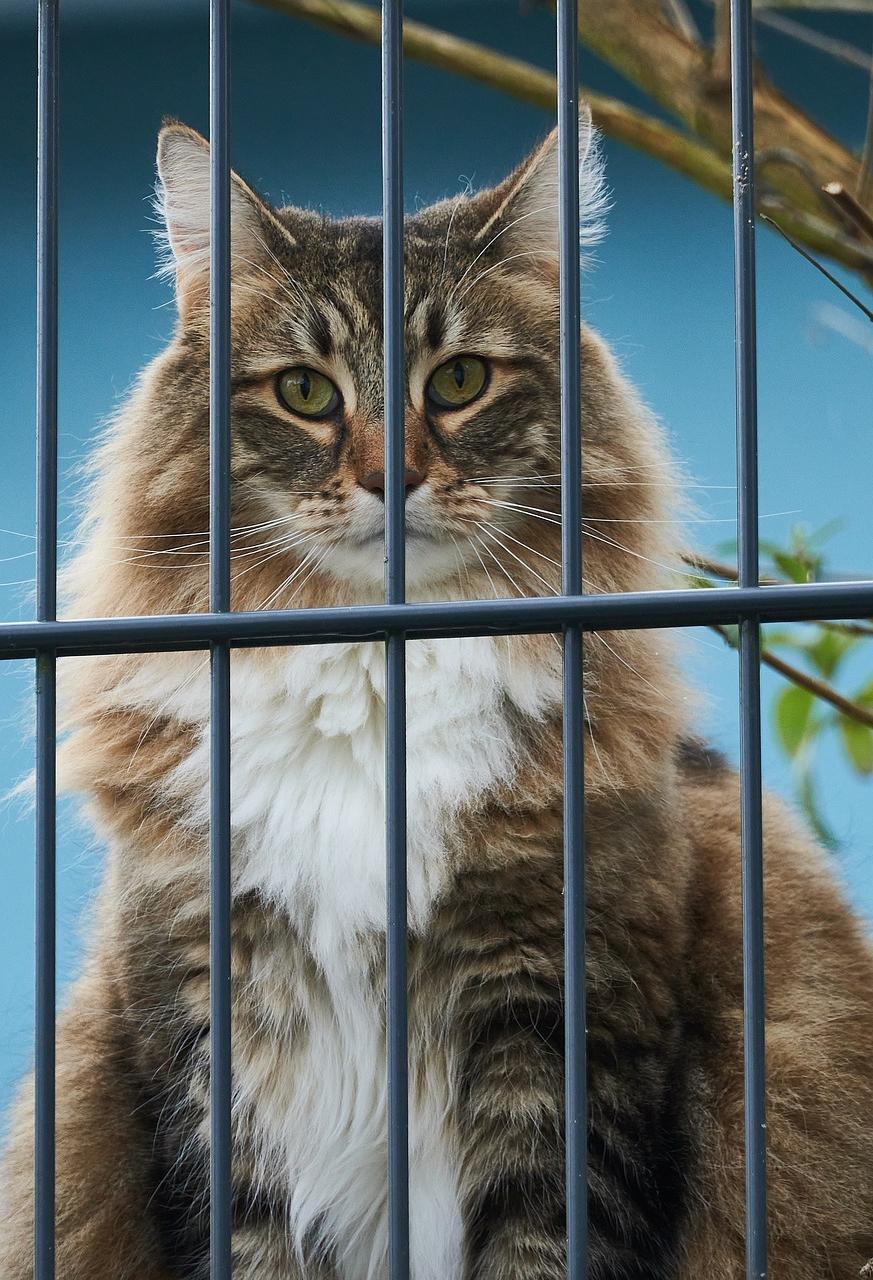Can You Keep a Cat in a Cage During the Day? (Honest Answer)

Just imagine:
You walk into your living room and find your cat's eyes filled with longing, desperately seeking freedom 😿.
Can you keep a cat in a cage during the day?
Should you?
Let's explore this controversial topic together.
Keep reading.
Can I Leave My Kitten in a Cage While I’m at Work?
If you're wondering whether it's okay to leave your kitten in a cage while you're at work, here are some tips to keep in mind:
- You can set up a playpen with toys and climbing structures for your kitten.
- Temporary crating might be necessary in specific situations.
- However, it's generally not recommended to crate a kitten all day long.
- It's important to ensure that your kitten feels comfortable and stress-free.
- When adjusting to a new home, you can use a crate to help them feel secure.
- A crate can also be useful when training your kitten to use the litter box.
- If there are medical needs or behavior issues, a crate can be used to address them.
- A crate provides a secure space for your kitten and helps prevent accidents.
- Make sure the crate is spacious enough for your kitten to engage in essential activities.
- Don't forget to leave food, water, and toys inside the crate for their entertainment.
So, whether you're traveling, going to the vet, or working, your kitten can stay comfortably in a cage all day with proper training and provisions. 😺

And now, let's discuss the potential drawbacks and considerations when it comes to keeping your cat in a cage for extended periods of time!
Is it Cruel to Keep a Cat in a Cage?
While confining a cat in a cage may seem cruel, it can lead to stress and restricted freedom. However, there may be situations where cat confinement is necessary. Remember that it limits access to essentials and is not an ideal situation for your furry companion.
Keeping your cat in a cage during the day might seem cruel to you.
Cats are natural wanderers, and they love to explore freely and bask in the warmth of sunbeams whenever they please.
When they're confined all day long, it can make them feel stressed and resentful, suppressing their sense of freedom.
To ensure your furry friend still gets some supervised time outside the cage, try introducing scheduled playtime or granting access to a catio.
Always prioritize their well-being and make sure they're safe at all times. No cat enjoys feeling trapped behind bars; it's truly heartbreaking. Especially for energetic cats, being cooped up all day is not ideal.
Putting your fluffy buddy in a cage may even lead to anxious behaviors surfacing.

However, there are certain situations where cat confinement is necessary, depending on your lifestyle and available resources.
Just remember that limiting their movement also means limiting their access to necessities like food, water, and yes, the litter box.
It's definitely not an ideal situation for your furry companion.
So, if you're pondering whether it's cruel to keep a cat in a cage, I understand your concerns.
That's why Do Cats Understand Kisses written by me, is a must-read.
In this article, I delve into the intriguing question of whether cats perceive kisses as expressions of love.
Get ready to uncover the secret language of feline affection!
What Are the Alternatives to Cages?
Designating a catproofed room: A cage-free option
Listen, if you don't like putting your cat in a cage, I have another idea for you.
How about creating a special room just for your furry friend?
Here's the plan.
This catproofed room has everything your cat needs - litter box, food, water, toys, and hiding spots.
It's like their own little kingdom...
They can stretch, explore, and have fun without being confined.
Sounds good, doesn't it?
Tips for confining your cat without a cage
Imagine this situation:
You want to keep your cat in one place, but you also want them to be entertained.
What do you do?
Well, here's what you can try.
First, ensure you have plenty of toys and puzzles to keep your cat busy. Boredom is the enemy!

And make sure the area is warm and cozy. You could even leave some background noise, like a TV or radio, to keep them company.
Trust me, it works!
Oh, and have you heard of those sprays or diffusers that release pheromones?
They create a calming environment for your furry buddy.
Give it a shot, don't you think?
Various cage alternatives to suit your needs
But look, I understand that sometimes you might actually need a real cage.
Maybe you're looking for something specific for outdoor use, or maybe you just prefer a different material.
Don't worry, because there are options!
You can find wooden cages, insulated cages for those chilly days outside, and even walk-in enclosures for lucky cats with lots of outdoor space.
See?
There's something out there that will suit both you and your feline friend's needs.
So why stick to the traditional cage when there are so many other options available?
Let your cat explore the world without being confined by those bars.
Trust me, they'll appreciate it!
What Are the Benefits of Putting Cats in the Cat Cages?
Putting cats in cat cages can benefit you and your furry friend in a number of ways:
- Cats feel secure with their own private space: Covering a portion of the cage with a cozy blanket or towel creates a den-like area where your cat can find solace and retreat if needed.
- Give them time to heal after surgery: Separate cages provide an ideal environment for post-operative recovery, allowing your cat to rest and heal without any interference from other pets.
- Help them adjust to a new home: Introducing a new cat to your home can be overwhelming for them. Using a crate gives them a safe and secure space where they can acclimate to their surroundings and prevents them from wandering off.
- Protect your cat when you're away: Leaving your cat in a cage while you're not at home helps prevent potential damage to your property and accidents that could harm your feline companion. It ensures their safety even when you're not around to supervise.
- Ensure a comfortable night's sleep: Large cages offer a secure sleeping area for your cat, especially if they are still getting the hang of using the litter box properly.
- Engage in interactive playtime: Spending quality time with your cat inside the cage through interactive play with food or toys keeps them mentally stimulated and entertained.
To make sure your cat feels at ease during confinement, provide them with essentials like cozy blankets, food and water bowls, litter boxes, and toys in their cage.
This will ensure that their time spent inside is as enjoyable as possible.
To truly ensure your cat's well-being, I prioritize their comfort and safety.

That's why, when discussing the benefits of cat cages, I emphasize the importance of giving them their own private space.
However, if you're considering adopting a declawed cat, there's another topic I'd like to tackle.
Discover in my article, nestled here: Should I Adopt a Declawed Cat, where you'll find a wealth of information on the pros and cons of taking this particular feline companion into your home.
Trust me, it's worth taking a look!
How Long Can Cats Be Safely Kept in a Cage?
Exercising your cat or playing with them before crating can tire them out, allowing for more comfortable rest once in the crate.
Keeping your cat in a cage for extended periods, such as over six hours, is not advisable unless it's for medical reasons.
For kittens under four months of age, three to four hours alone in the crate should suffice.
For older kittens above five months, they can handle up to five hours in the crate. Extended periods confined can lead to boredom and stress in cats. It's best to limit crating time to no more than six hours.
As long as your cat has adequate space to move around comfortably, there isn't a set limit on how long they can be kept in a cat cage.
Can an Older Cat Be Trained to Stay in a Cage?
Can you train an older cat to stay in a cage?
Absolutely!
Contrary to what people believe, it is possible to train an older cat to stay in a cage.
It may take more time and effort on your part, but it's definitely doable.
One effective way is to use positive reinforcement.

By using a clicker or offering treats when your cat voluntarily enters the cage, you create a positive association. This makes them see the crate as a place of rewards and safety.
Veterinarians even suggest crating cats after surgery to prevent further injury and limit their activity.
So, if your older cat recently underwent a procedure, keeping them in a cage for a while might be necessary for their recovery.
Now, training kittens from a young age is easier, but don't worry if your cat is older.
By gradually introducing them to the cage and letting them explore at their own pace, they can adapt to being confined.
Start with short periods inside the cage with the door closed, then slowly increase the time over time.
Eventually, your furry companion will learn to feel comfortable and secure in their little cozy space.
Cage-free solutions for cat keeping during the day
Key Takeaways:
- Temporary crating may be necessary for specific reasons, such as abandonment or litter box training.
- Crating a cat all day is generally not recommended unless there's a specific reason.
- Ensure the crate has enough room for essential activities.
- Leaving food, water, and toys inside the crate can keep the cat occupied.
- Cats should be free to roam the house and not be confined to a cage all day.
- Keeping a cat in a cage for too long can be cruel and cause fear and resentment.
- Consider the cat's safety and well-being when deciding whether to cage.
- Alternatives to using cages include providing toys and puzzles, creating a warm and cozy environment, and setting up a spare room for the cat.
- Crating can be beneficial for recovery from surgery or introducing a cat to a new home.
- Lengthy periods of time in a cage can cause boredom and stress in cats.
- Crating after surgery is a common practice to limit activity and prevent further injury.
- Cats of any age can be taught to use a crate through gradual training.
And that wraps up today's article.
If you wish to read more of my useful articles, I recommend you check out some of these: Why Do Cats Like to Be Patted on the Bum, Does Your Cat Nose Bump You, Why Is My Cat Obsessed With My Face, Why Is My Cat Hiding in the Closet, and Do Kittens Bite When Teething
Talk soon,
-Sarah Davis